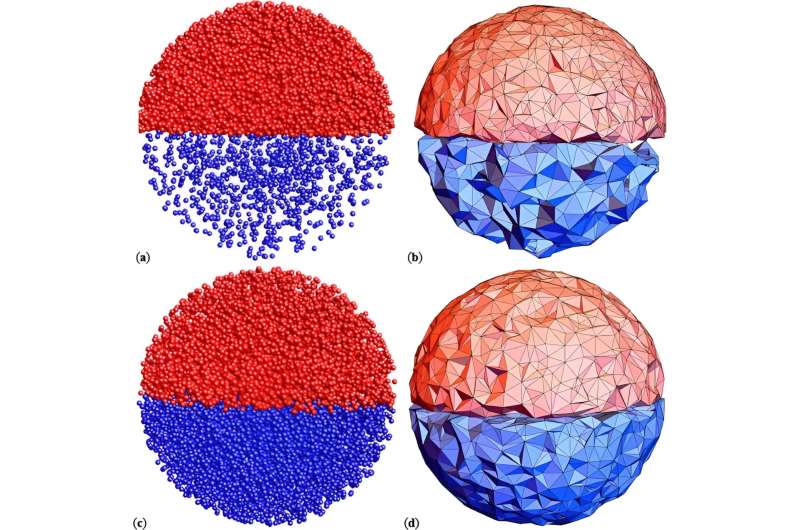Integrating small-angle neutron scattering with machine learning enhances measurements of complex molecular structures

Small-angle scattering (SAS) is a powerful technique for studying nanoscale samples. So far, however, its use in research has been held back by its inability to operate without some prior knowledge of a sample's chemical composition. Through new research in The European 糖心视频ical Journal E, Eugen Anitas at the Bogoliubov Laboratory of Theoretical 糖心视频ics in Dubna, Russia, presents a more advanced approach, which integrates SAS with machine learning algorithms.
Named 伪-SAS, the technique can analyze molecular samples without any need for extensive preparation or computing resources, and could enable researchers to gain more detailed insights into the properties of complex biomolecules: such as proteins, lipids, and carbohydrates.
SAS measures the deflection of radiation鈥攖ypically X-rays or neutrons鈥攁fter interacting with molecular structures suspended in a solvent. By adjusting the solvent's composition, researchers can enhance or diminish the visibility of certain components of the system: a technique named "contrast variation." For this to work, however, researchers still need some knowledge of the sample's chemical composition before the experiment begins.

Through his study, Anitas overcame this limitation by integrating SAS with machine learning algorithms, creating a technique named 伪-SAS. This approach estimated the results of small-angle neutron scattering (SANS) by running many random simulations of the suspended sample, and analyzing the distribution of their results.
Anitas demonstrated the capabilities of 伪-SAS through two different case studies. The first of these investigated "Janus particles": artificial, self-propelling structures with a well-known contrast variation and neutron scattering intensity. Secondly, he tested the technique on a complex, protein-based molecular system.
In each case, Anitas' measurements of the molecular structures were far more efficient than they would have been without any integration with machine learning. Based on these promising results, Anitas is now hopeful that, through his approach, SAS could soon become an even more powerful tool for analyzing molecular structures.
More information: Eugen Mircea Anitas, Integrating machine learning with 伪-SAS for enhanced structural analysis in small-angle scattering: applications in biological and artificial macromolecular complexes, The European 糖心视频ical Journal E (2024).
Journal information: European 糖心视频ical Journal E
Provided by SciencePOD




















